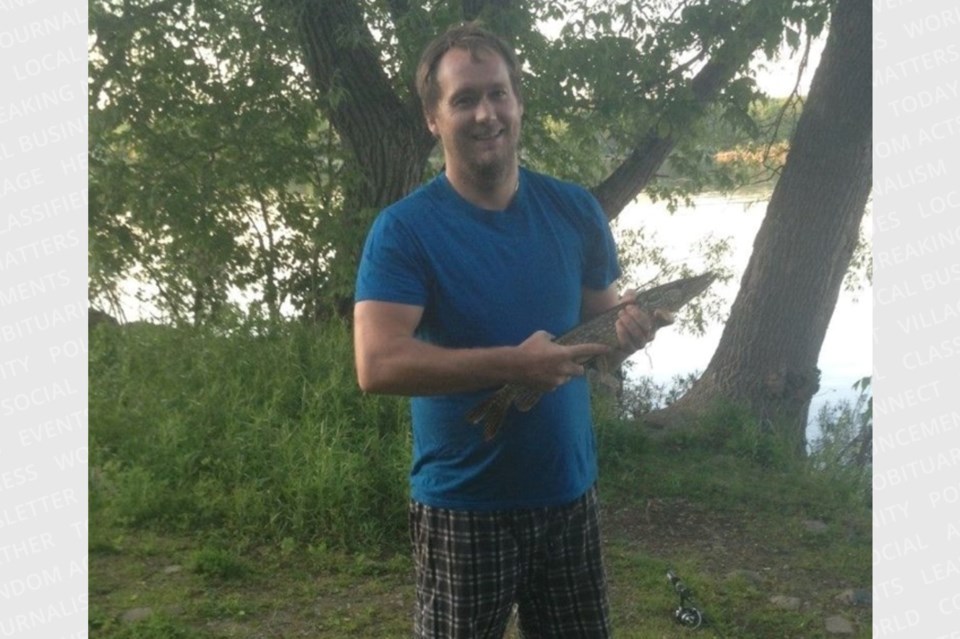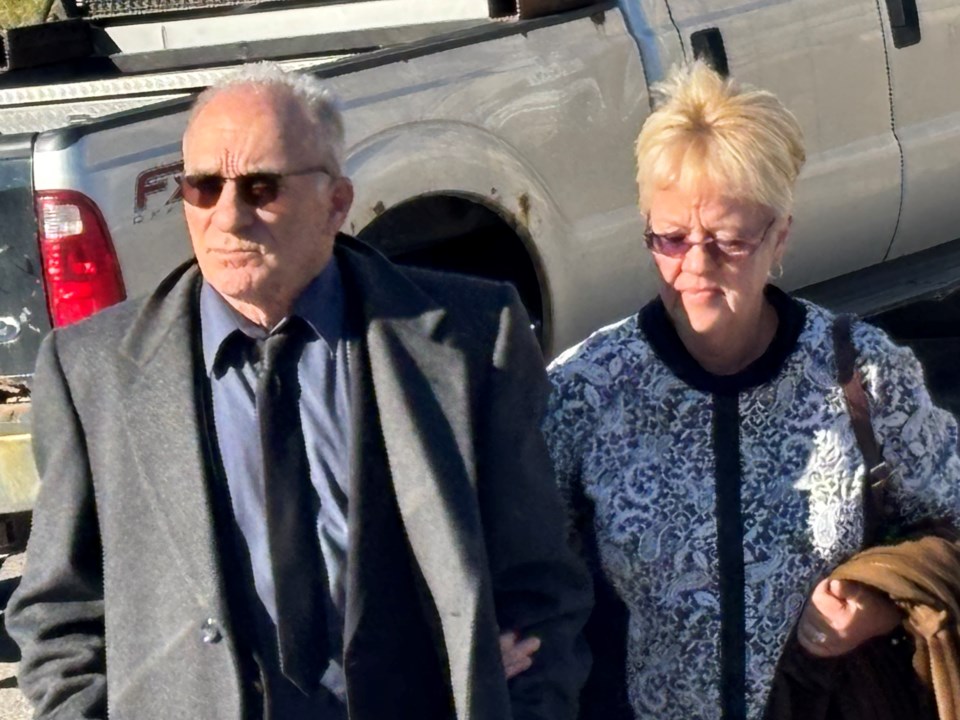WARNING: This article contains graphic details heard in court that may disturb some readers.
Members of the jury in a second-degree murder trial at the Barrie Courthouse saw autopsy photos today of the single, solitary stab that killed Christopher Forrester on a cold, December night in Midland almost three years ago.
Wednesday's proceedings were part of pathologist Dr. Liza Boucher’s testimony in the second-degree murder trial of Rick Patrick, a retired Midland father and grandfather, who killed Forrester on a driveway near his home nine days before Christmas in 2021.
Patrick claims it was self-defence.
The Crown is attempting to prove that Patrick had the requisite intent to be guilty of second-degree murder.
Before the autopsy images, the Crown displayed photos of the weapon that killed Forrester, and walked Boucher through a series of questions about its design.

“There are no issues (questioning) that this is the knife that caused” Forrester’s death, Patrick’s defence lawyer, Alison Craig, told the court.
The Crown moved on to the autopsy photos, which prompted Superior Court Justice Clyde Smith to caution the jury that they could find the evidence disturbing.
With the court’s focus turned to the autopsy photos, to the naked eye, the fatal wound did not appear to be as grave as its catastrophic result.
In his opening submissions to the jury last week, Crown attorney Dennis Chronopoulos told the jury that Forrester died from a single stab wound that plunged 10 centimetres into his chest and pierced his heart.
Forrester, an Orillia native who had lived in Midland for several years before his death, was pronounced dead at the Midland hospital less than an hour later. He was 36 years old.
He had rented a trailer from Patrick, who was trying to evict him, court has heard.
Members of Forrester's family, who have been in attendance daily during the trial that began last week, left the courtroom before the autopsy images were displayed in open court.
On her cross-examination, Craig asked Boucher whether the photos of Forrester’s wound, or of the knife, could offer any clues as to the physical nature of the fatal confrontation.
“There are too many (possible) variables,” Boucher testified.
The Crown also displayed a photo of the victim’s bloody hand. Blood was visible on Forrester’s middle and pinky finger, although Boucher said the cut on his little finger appeared to be “shaving” in nature, a superficial wound.
Forrester’s middle finger also had dirt on it, mixed in with blood that Boucher said could have come from “terminal collapse” as he fell to the ground.
The trial continues Thursday at the courthouse on Mulcaster Street.



